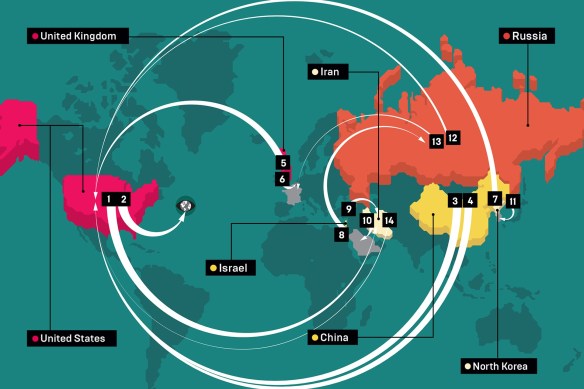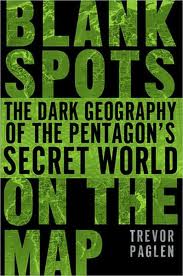In my latest posts on the wars in Syria – Cities under Siege here and here – I tried to open a space for the voices of those inside the siege lines. To supplement those discussions, I want to notice two other digital breaches of siege lines, one in Mosul in Iraq and the other in East Ghouta in Damascus.
Although the Syrian regime has been either unwilling or unable to prevent digital access to the world outside its barricades (no doubt for a variety of reasons), Islamic State has persistently sought to isolate the communities it controls from within. For example:
 In Mosul, Omar Mohammed – a 31 year-old ‘stealth historian‘ – risked his life to chronicle life under IS in a remarkable series of posts: Mosul Eye. When he lost his job teaching ancient history at the university in June 2014 he started an anonymous blog and became the eponymous ‘Mosul Eye’.
In Mosul, Omar Mohammed – a 31 year-old ‘stealth historian‘ – risked his life to chronicle life under IS in a remarkable series of posts: Mosul Eye. When he lost his job teaching ancient history at the university in June 2014 he started an anonymous blog and became the eponymous ‘Mosul Eye’.
Lori Hinnant and Maggi Michael reported for AP:
Anonymous for more than three years, Mohammed wandered the streets of occupied Mosul by day, chatting with shopkeepers and Islamic State fighters, visiting friends who worked at the hospital, swapping scraps of information. He grew out his hair and his beard and wore the shortened trousers required by the extremists. He forced himself to witness the beheadings and deaths by stoning, so he could hear killers call out the names of the condemned and their supposed crimes.
By night, he was Mosul Eye, and from his darkened room he told the world what was happening. If caught, he knew he would be killed.
Writing in the New Yorker in October 2016, Robin Wright explained that Mosul Eye
provided details about life under the caliphate—initially offering hourly reports regarding roads around Mosul that were safe to travel, and then, in the following weeks, reporting on the dawning anxiety about the heavily armed ISIS fighters, the power blackouts, the rising prices, the chaos in local markets, the panic over food shortages, and the occupiers’ utter brutality. Over the next year, Mosul Eye expanded into a Facebook page and a Twitter account. The posts were determinedly stoic—melancholic and inspiring at once.
For the past two weeks, as Mosul has become the epicenter of a new U.S.-backed offensive to defeat ISIS—also known as ISIL—Mosul Eye has been posting dozens of times a day on its social-media outlets. On Monday, it tweeted, “Today, Mosul has entered the atmosphere of the war. The bombardment is continuous on many areas of the city, specifically the southern and northeastern outskirts of the city.”
Mohammed paid smugglers to arrange his escape, and once outside of Mosul he eventually revealed his identity; it was not an easy decision but once he had made it, he said, he finally felt free.
Most of the published interviews with Mohammed took place once he was outside Mosul and his identity was known, but Wright managed to reach him over social media inside the besieged city and her report addressed the key questions of provenance and credibility:
Iraqis and Mideast scholars believe that the site is for real. Rasha al Aqeedi, a scholar from Mosul who now writes from Dubai, told me that “the information is reliable,” and added, “The perspective and ideology, however, reflect Mosul’s young intelligentsia: the will to review Islam and question religious texts and the fault lines along historic narratives.”
But the same questions dogged the two AP journalists en arrière, once they had met with him and he revealed his identity. Here is their detailed response:
Omar gave us databases from his hard drive tracking the dead, noting daily events in Mosul. Each one was a separate file — totaling hundreds of files. The origin dates on each matched the date of the file, or at most was one or two days away from it. For his account of the day on the Tigris, he gave us multiple photos and a video from the day, each with an origin date in March 2015, which was when he said the events had happened. On Google Maps, he showed us the curve in the river where he picnicked, and zoomed on the marshy areas to show how it matched up with his account. As for himself blogging inside a dark room in his house in Mosul, he provided a video that AP used. He used maps to show his escape route. He showed on Google a list of the top students from his high school in Mosul, and his name was among the top five.
On the third day, just before we filmed over the course of about 90 minutes, he stepped away to make a phone call, in English, to announce that in a few minutes he would be shedding his anonymity as he didn’t want to be anonymous anymore. He showed us footage from his thesis defense, in which one of the professors accused him of secularism.
After the meetings, we asked Omar for contact information for his thesis advisor, who was among the few to figure out his identity during the early days of Mosul Eye; his younger brother, who he had told over the summer; activists and volunteers he worked with in Mosul; an American history professor he was in touch with via Skype since 2012, who knew his real identity. He provided all of this, and we spoke with all of them, including one person who, as it turns out, also figured out who he was and discovered that they have mutual friends. Omar provided us with links to his own scholarly work on Mosul. He sent over screen grabs of exchanges with a reporter from another news organization who he had worked with during the airstrikes to try and extract trapped civilians. He explained that, by that point, people were just messaging Mosul Eye in hopes he could help them. He acknowledged one other person had administrator access to the account: a Mosul woman now living in the U.S. who helped him with some of the interviews in English.
Omar explained to us how he cross-checked his information, and we put some of that into the story, but Mosul Eye isn’t an infallible source any more than anyone else, especially in a chaotic war environment. His death toll numbers, especially during the final months of the battle, are unconfirmed but in line with other estimates.That said, some of his unpublished notes read by Lori and Maggie, with origin dates from 2014 and 2015 and early 2016 especially, showed knowledge of IS that would only be published later. The leaflets he was collecting and publishing, the photos he was using to offer biographies and diagrams of their leadership showed a historian’s desire for documentation.
Several activists whom AP interviewed said that Mosul Eye was the only window to the outside world and that they have been closely following but fearing to even “like” or “share,” knowing that IS keeps an eye on social media.
I have cited this passage in its entirety because in the deformed world of “fake news” (which plainly did not start with Donald Trump, even if he embodies its digital metastasis: see also here and here), where today the alt.left is as pernicious as the alt.right in disparaging stories they don’t like, questions of veracity – and, to be sure, of positionality – have assumed a new and profoundly political importance The vomit-inducing denial of systematic Russian and Syrian air strikes on hospitals and medical facilities across Syria is a case in point; the disingenuous disparagement of the work of MSF, the Syrian Civil Defence (the White Helmets) and a host of other non-government agencies is another.
It’s a complicated terrain, of course, and my second example illustrates something of what is at stake. It comes from East Ghouta. I’m preparing a major post on recent events there – it should be ready next week – and, as in my previous work, here too I’ve drawn on voices from inside the siege. Many newsrooms and digital platforms have reported the extraordinary videos posted on Twitter and YouTube by 15 year-old Muhammad Najem: see here and here.
 CNN reported:
CNN reported:
Najem’s videos have a common theme: an appeal to the world to bear witness to what is happening in Syria.
“People should know about everything happening in Syria,” he told CNN. “I want to follow my studies. I want to become a reporter when I grow up. “Our blood begs every day. You watch it daily without any reaction from you,” Najem says in one video, wearing a Syrian flag draped around his neck like a scarf. “Our hunger, cold, and displacement have become a common sight. Save our people in Ghouta.”In one of his most powerful videos, Najem stands on a rooftop as explosions echo in the distance. “We are killed by your silence,” he says.”
(If you read some of the comments below his videos on YouTube, you will discover the killing is not only accomplished by silence.)
The CNN report added the by now standard disclaimer – ‘CNN cannot independently verify the authenticity of these videos – but the tone and texture of their coverage makes it plain that CNN doubts neither their authenticity nor their accuracy. There is no single, plenary Truth – Donna Haraway debunked the ‘God Trick’ ages ago – but passion and partiality do not automatically disqualify someone’s voice: still less so, when their position is so precarious.
In one of the videos, Najem says he wants to become a reporter “when I am grown up”. But for Franco-American [photo]journalist Jonathan Alpeyrie, who covered the Syrian conflict (in 2013, he was held captive by an Islamist group for 81 days), “a journalist shouldn’t be seen… Otherwise he becomes the subject,” he told FRANCE 24. To Alpeyrie, the teenager is more activist than journalist. “He is hostile to Bashar al-Assad but the role of the press isn’t to take a stance….”
Although several news outlets have relayed the teenager’s testimony, Alpeyrie thinks it’s dangerous to do so: “We can’t confirm the provenance of these videos. He says that he’s filming in Eastern Ghouta, but we don’t know anything.”
Describing Najem’s videos as a series of ‘selfies’, France 24’s reporter asked philosopher-psychoanalyst Elsa Godart for her take on them:
If a teenager is behind the account, his reliance on the selfie can have different motivations, said Godart. In the worst situation, aside from manipulation: “We can envision an extreme narcissism, where one plays on a tragic event under the sympathetic guise of defending humanity.”
And if we assume that the gesture is real and sincere on the part of an adolescent on the ground? “Then this could be just as it appears: a selfie as an act of resistance. The Chinese artist Ai Weiwei documented his 2009 arrest with a selfie that he later exhibited as a work of art,” said Godart.
To her, the selfie taken at war is similar: “It denounces something extraordinary. It is a testimony of something that one feels a duty to report. ‘I am attacked, and here is the photographic evidence.’”
I hope it’s obvious what I think too.





























